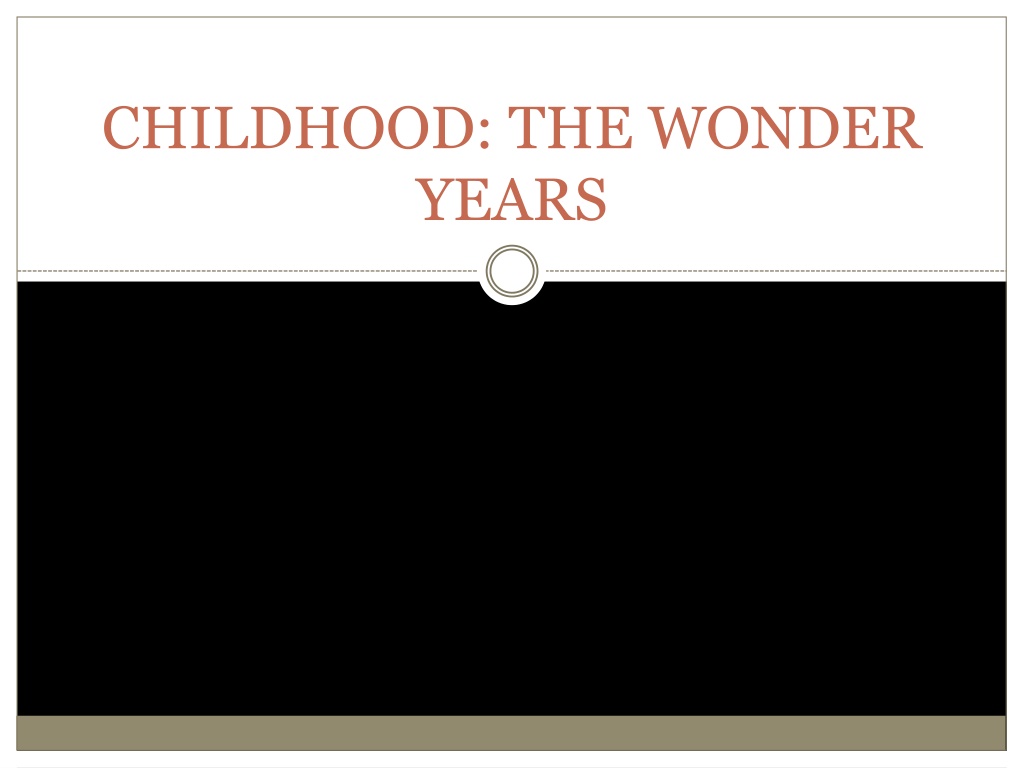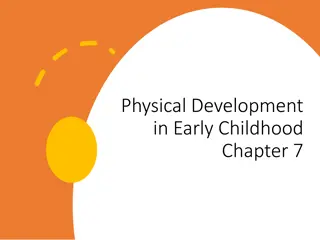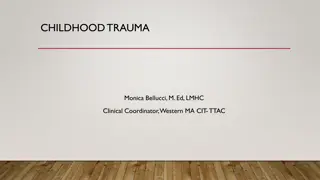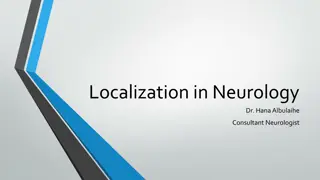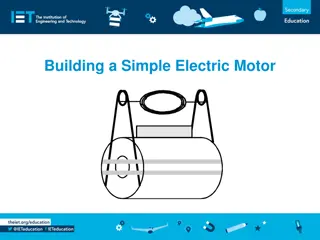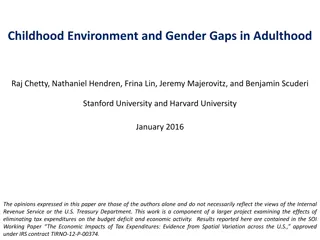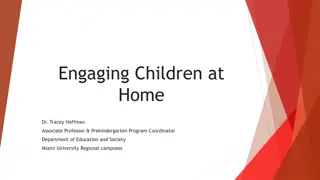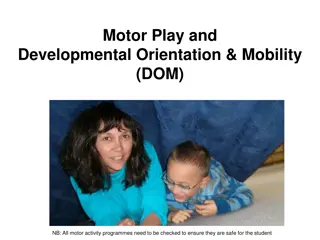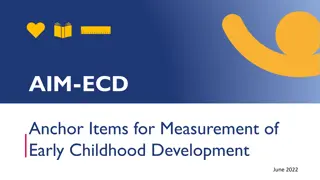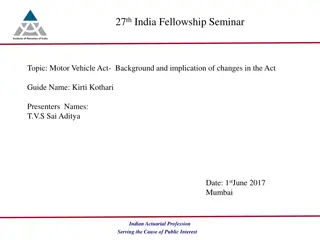Understanding Motor Development in Childhood
Motor development in childhood encompasses the progression of muscular coordination essential for physical activities like grasping, reaching, crawling, and walking. It follows basic principles such as the cephalocaudal and proximodistal trends, influenced by maturation and developmental norms. Cultural variations play a role, and research explores the temperament of easy and difficult babies, as identified by Thomas and Chase. Their findings highlight different temperamental styles established early in life.
Download Presentation

Please find below an Image/Link to download the presentation.
The content on the website is provided AS IS for your information and personal use only. It may not be sold, licensed, or shared on other websites without obtaining consent from the author. Download presentation by click this link. If you encounter any issues during the download, it is possible that the publisher has removed the file from their server.
E N D
Presentation Transcript
CHILDHOOD: THE WONDER YEARS
MOTOR DEVELOPMENT Refers to progression of muscular coordination required for physical activity Grasping, reaching, crawling, walking, etc
BASIC PRINCIPLES OF MOTOR DEVELOPMENT 1: Cephalocaudal trend: head-to-foot direction of motor development Children tend to gain control of their upper body before the lower 2: Proximodistal trend: center-outward direction of motor development
MATURATION Early motor dev. depends partially on physical growth; uneven in infancy Early motor dev. attributed to Maturation: development that reflects the gradual unfolding of one s genetic blueprint
DEVELOPMENTAL NORMS DEF: the median age at which individuals display various behaviors and abilities Useful as benchmarks in the life span
CULTURAL VARIATIONS AND THEIR SIGNIFICANCE Cross-cultural research shows a relationship btwn experience and maturation As age increases, maturation becomes less influential and experience is more critical
EASY AND DIFFICULT BABIES Temperament: characteristic mood, activity level, and emotional reactivity Alexander Thomas and Stella Chase studies Longitudinal study: observe one group repeatedly over a period of time Cross-sectional study: compare groups of differing age at a single pt. in time
THOMAS AND CHASE FINDINGS Temperament is established btwn 2 or 3 months old 3 basic styles: 1) Easy children: 40%; happy, regular sleep and eating, adaptable, not easily upset 2) Slow-to-warm-up: 15%; less cheery, less regular sleep and eating, slower adaptation to change 3) Difficult children: 10%; glum, erratic sleep and eating, irritable, resistant to change --remaining 35% were a mix
OTHER RESEARCH Jerome Kagan 15-20% of infants: inhibited temperament: shy, timid, wary of unfamiliar 25-30% of infants: uninhibited temperament: not shy, approach unfamiliar
EARLY EMOTIONAL AND PERSONALITY DEVELOPMENT
ATTACHMENT DEF: close, emotional bonds of affection that develop btwn infants and their caregivers Usually to the mother Not instantaneous Separation anxiety: emotional distress seen in many infants when they are separated from people with whom they have formed an attachment
PATTERNS OF ATTACHMENT Secure attachment: infant is comfortable when mother present, visibly upset when she leaves, calmed when she returns Anxious-ambivalent: anxious when mother present, protest when she leaves, not calmed when she returns Avoidant attachment: seek little contact w/mother, not distressed when she leaves
EFFECTS OF SECURE ATTACHMENT Children tend to become competent toddlers w/high self-esteem Preschool years: leaders, self-reliant, better peer relations Age 11: better social skills, more close friends More advanced cognitive development All correlational data
BONDING AT BIRTH Some believe that skin-to-skin contact btwn newborn and mother is important Can create a more effective attachment
DAY CARE Do infant-mother separations effect attachment? 2/3 of children under 5 are in day care Research by Belsky shows 20+ hrs per week increases development of insecure attachment
CULTURE AND ATTACHMENT Separation anxiety emerges c. 6-8 months Peaks about 14-18 months Attachment is culturally universal Differences occur due to child-rearing practices
EVOLUTIONARY PERSPECTIVES ON ATTACHMENT Attachments may depend on the character of the environments Secure environments create sensitive parents, which leads to secure attachment Harsh environments create unresponsive parents; leads to insecure attachment
BECOMING UNIQUE: PERSONALITY DEVELOPMENT Freud came up w/1sttheory of personality development Erik Erikson revised the stage theory of Freud Stage: developmental period during which characteristic patterns of behavior are exhibited and certain capacities become established
ERIKSONS STAGE THEORY 8 stages Each has a psychosocial crisis involving transitions Personality is shaped by how we deal with these crises
STAGE 1 Trust vs. Mistrust In the 1styear of life Babies rely on others for care If biological needs are seen to, secure attachments form
STAGE 2 Autonomy vs. Shame and Doubt 2ndand 3rdyears of life Toilet training and other ways of regulating behavior Child must begin to take some responsibility Parent-child conflicts may create shame and self- doubt
STAGE 3 Initiative vs. Guilt Ages 3-6 Children take initiatives that conflict with rules Overcontrolling parents may instill feelings of guilt, damaging self-esteem Be supportive while maintaining control
STAGE 4 Industry vs. Inferiority Ages 6-puberty Learning to function socially beyond the family Effective functioning leads to higher sense of competence
GROWTH OF THOUGHT: COGNITIVE DEVELOPMENT COGNITIVE DEVELOPMENT: TRANSITIONS IN CHILDREN S PATTERNS OF THINKING, INCLUDING REASONING, REMEMBERING, AND PROBLEM SOLVING
OVERVIEW OF PIAGETS STAGE THEORY Jean Piaget Wanted to study how children use intelligence Believed the way children think is altered by interaction w/environment and maturation 4 major stages
STAGE 1 Sensorimotor Period From birth to age 2 Development of coordination of sensory input Transition from innate reflexes to use of mental symbols Object Permanence: recognition that objects continue to exist even when no longer visible
STAGE 2 Preoperational Period Age 2-7 Principles: 1: Conservation: awareness that physical amts remain constant in spite of changes in shape and appearance 2: Centration: tendency to focus on one feature of a problem, ignoring others
STAGE 2 CONTINUED 3: Irreversibility: inability to envision reversing an action 4: Egocentrism: limited ability to share another person s point of view ---notable feature of egocentrism: animism: belief that all things are living
STAGE 3 Concrete Operational Period Development of mental operations Reversibility and decentration occur Leads to decline in egocentrism and mastery of conservation Problem solving skills enhance
STAGE 4 Formal Operational Period C. 11 yrs old Abstract operations Problem solving becomes systematic, logical, and reflective
ARE COGNITIVE ABILITIES INNATE? Habituation: gradual reduction in strength of a response when a stimulus is presented repeatedly Dishabituation: occurs if a new stimulus elicits an increase in the strength of an habituated response
CHILDRENS UNDERSTANDING OF THE MIND Age 2: distinguish btwn desires and emotions Age 3: realize other s thoughts and beliefs Age 4: begin to understand how thoughts and desires effect behavior
PROGRESS IN INFORMATION PROCESSING Info. processing theory focuses on how people receive, encode, store, organize, retrieve, and use information Has shown developmental changes in attention and memory
ATTENTION Attention span lengthens as age increases More conscious control is acquired Gradually able to filter out irrelevant data
MEMORY Infantile Amnesia: inability to remember experiences from early years Memories usually start around 3 or 4 yrs old Development of language skills improves memories Strategies for enhancement of information storage and retrieval: Rehearsal: repetition; verbal or thinking (age 5) Organization: grouping based on similarities(age 9) Elaboration: building additional associations(age 11)
DEVELOPMENT OF MORAL REASONING
KOHLBERGS STAGE THEORY Lawrence Kohlberg Theory focus: moral reasoning Three levels: Preconventional, Conventional, Postconventional Each as 2 sublevels (6 stages in all)
KOHLBERGS LEVELS Preconventional: thinking in terms of external authority---based on punishment or reward Conventional: internalize rules to be virtuous and win approval---rules are absolute Postconventional: working out personal code of ethics; moral thinking is flexible
